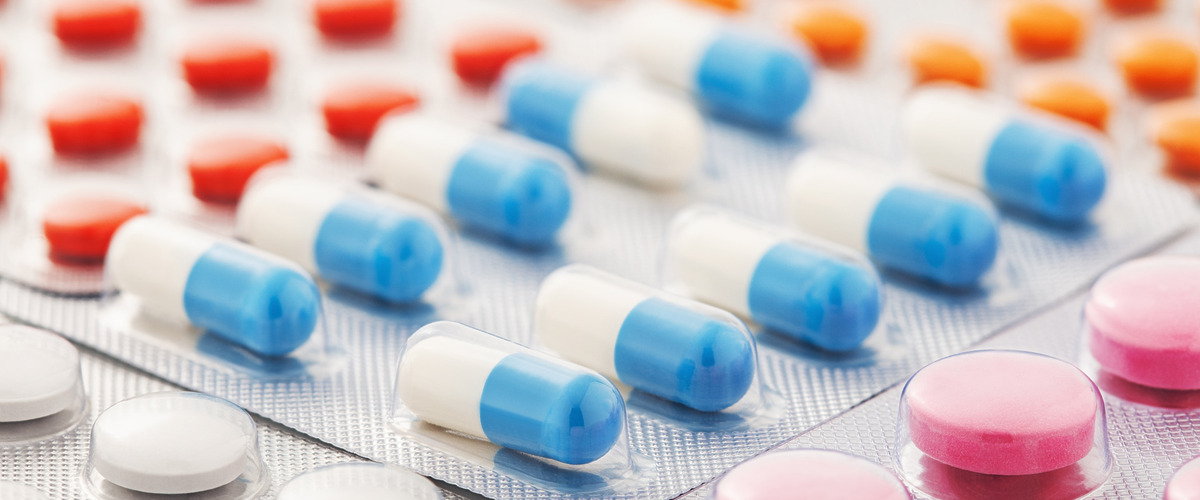Article | 6 December 2023
National exceptions for relabelling with new safety features – increased legal certainty and patient safety?

Introduction
In order for a parallel imported product to be launched on the market of the Member State of destination, the package leaflet generally has to be changed to a leaflet in the domestic language. This, along with other rules that may apply in the specific case, means that the parallel importer must open the packaging. In some situations, the parallel importer might have to completely repackage the medicine. As this practice risks infringing upon the trademark rights of the original manufacturer, the Court of Justice of the European Union (CJEU) has established certain conditions under which a medicinal product may be repackaged. In short, the criteria state that repackaging may only take place when the trademark owner’s action involves an artificial partitioning of the market between the Member States. Repackaging must be necessary for the sale of the parallel imported medicinal product. However, repackaging must not damage the reputation of the brand or the original condition of the medicine. In addition, certain information requirements apply. In the wake of regulations on anti-tampering devices, the concept of necessity has been complicated.
In February 2019, requirements regarding anti-tampering devices on the packaging of prescription-only medicine were introduced in the EU.[1] The provisions related to safety features are stated in Directive 2001/83/EC[2], amended by Directive 2011/62/EU and supplemented by Regulation (EU) 2016/161. The amendments of Directive 2001/83/EC were a result of an increase of medicinal products detected in the legal supply chains in the Union as having their identity, history or source counterfeited and generally containing sub-standard or counterfeited ingredients.[3] To curb this trend, the amended Directive introduced a requirement for an anti-tampering device on the packaging of prescription pharmaceuticals, with the aim of preventing counterfeit medicines from entering into the legal supply chain by making it possible to identify packages that have previously been opened.[4] However, further technical aspects of the anti-tampering device have not been defined.
Leading up to three rulings by the CJEU in November 2022, the provisions were by some interpreted as constituting a requirement to repackage parallel imported pharmaceuticals as opening the packaging of the pharmaceutical inevitably breaks the anti-tampering device. The process leaves traces on the packaging, possibly making identification of illegally opened packaging harder. While the CJEU took the view that this is generally not the case, uncertainties remain. Following industry opinions on the proposed renewed pharmaceutical legislation, the topic has been revisited.
Recent rulings of the CJEU
For a replacement of an anti-tampering device to be considered sufficient, it must be equivalent in terms of establishing authenticity, identity and possible manipulation of the medicinal product. An anti-tampering device is only considered sufficient if, when broken, it leaves traces. These traces are inevitable if the product is to be repackaged.[5] The question before the CJEU was therefore whether such traces resulted in the new anti-tampering device not being considered equivalent.[6] The short answer is no. The CJEU concluded that such traces do not lead to the anti-tampering device being regarded as insufficient. The new anti-tampering device is equivalent to the old one if there is no doubt, on part of the wholesalers and persons authorised and entitled to supply medicinal products to the public, that the traces of opening are attributable to the repackaging by a parallel importer.[7] The CJEU added that the parallel importer, in accordance with older case law, is required to supply the packaging with an indication of who has undertaken the relabelling or repackaging.[8] This would indicate that the traces are attributable to the parallel importer.
According to the CJEU, the conclusion was inevitable, as a different approach would defeat the purpose of the provisions. Since the provisions state that new anti-tampering devices could be attached to packaging, a different conclusion would go against what had been explicitly stated. Hence, repackaging would only be considered necessary if it was objectively impossible to reseal the packaging with an equivalent anti-tampering device. There was no discussion of the situations in which this would apply.[9]
The CJEU based its reasoning on the fact that the concept of “equivalence”, according to the current Article 47a.1.b of Directive 2001/83/EG, is clearly defined. The Advocate General discussed at length the meaning of the term “equivalent”. According to him, a replaced anti-tampering device would be equivalent if it was as effective as the original.[10] The CJEU concluded that this level of effectiveness would be achieved if there was no doubt that the traces were attributable to the parallel importer. While the CJEU was inevitably bound by the provisions stating that anti-tampering devices may be replaced, this conclusion gives rise to some questions.
In its rulings, the Court did not discuss the risk of counterfeits of, for example, information on the packaging stating that any traces are attributable to the parallel importer. Of course, counterfeiters who are able to produce counterfeit medicines are able to falsify information on the packaging. This, however, may be less of a problem given that a unique identifier should provide the wholesaler with the necessary information. The likelihood of wholesalers and authorised persons being uncertain about the authenticity of the packaging is, therefore, in all likelihood limited. However, the provisions clearly state that such persons are obliged to prevent resale of medicines if there is any suspicion that the product is counterfeit.[11] In the event that the wholesaler is in doubt regarding the authenticity, the parallel imported medicine should be prevented from resale. In this situation, the product must be repackaged. This conclusion accords with the purpose of the regulation – to maintain patient safety without restricting intellectual property rights.[12]
However, it may be pointed out that the legal certainty of the parallel importer is to some extent limited in relation to the interests prioritised by the legislator. Whether repackaging is really necessary will only become apparent once the resealed product is released into the distribution chain. Each launch is therefore a risk. At present, there are no regulations or procedures, apart from those discussed above, that enable parallel importers to avoid with certainty prevention of the product from being resold. There again, it is difficult to imagine a regulatory framework that can fully take this into account while preserving interests such as patient safety and unrestricted intellectual property rights.
A harmonised approach
Although wholesalers and authorised persons are likely to be confident about the authenticity of the product despite traces of previous anti-tampering devices, the CJEU has opened the way to situations where this cannot be assured. While the actual scope for this exemption may be narrow, uncertainties as to when such situations arise could at least in theory give rise to some problems.
In the same rulings as referred to above, the CJEU stated that the provisions on safety features are to be considered as fully harmonised.[13] The current Article 60 of Directive 2001/83/EG states that the Member States cannot impose rules preventing sales of pharmaceuticals for reasons connected with safety features. As of today, rules requiring medicine to be repackaged so that no traces of previous anti-tampering devices are visible are thus banned. However, uncertainties as to when equivalence cannot be achieved might lead the competent authority to make an assessment obliging the parallel importer to repackage.
Parallel importers are obliged to adapt to the assessment of the national authorities. According to Article 47a.1.d of Directive 2001/83/EG, anti-tampering devices may only be replaced under the supervision of a competent authority. The uncertainties arising may lead the competent authority to prevent resealing, if it finds that equivalence objectively cannot be achieved. Thus, from a regulatory perspective, a parallel importer may have to repackage the medicinal product for it to be launched on the market. However, the fact that trademark law and the reasons for repackaging described therein are independent of the regulatory framework on anti-tampering devices means that a court, when assessing the legality of the repackaging in accordance with the criteria established by the CJEU on the basis of trademark law, might find that resealing was indeed permissible. As the CJEU has declared the regulations to be harmonised, if a national court finds its interpretation to be closer to the EU law than that of the competent authority, the authority’s decision cannot make repackaging a requirement. In such a case, the parallel imported product would be prevented from gaining effective market access.
While this reasoning might only give rise to theoretical problems, it shows up the problems of balancing the interests of patient safety, intellectual property rights and the interests of parallel importers. A proposal for a regulation aiming to enable Member States to impose national rules on repackaging due to traces of previous anti-tampering devices might solve this problem.
Going forward
On April 26, the Commission presented its proposal for renewed pharmaceutical legislation, including a proposed new Directive which, if implemented, would replace the existing Directive 2001/83/EC regarding the Community Code on medicinal products for human use. The provisions on counterfeit medicinal products, including the provisions on safety features, are maintained in the proposed Directive, without any amendments to their content from previous harmonisations.[14] The Swedish Ministry of Social Affairs has circulated the proposed directive to inter alia industry organisations. In its position paper, the Swedish association for parallel traders, Läkemedelshandlarna, proposed further legislation relating to repackaging of pharmaceuticals subject to parallel import. In its paper, the organisation encouraged the Swedish government to promote an addition to the proposed Article 67 of the Directive. The addition would establish that the Member States may decide, for reasons of patient safety, that medicinal products imported or distributed in parallel should be repackaged in a new outer packaging.
It follows from the above discussion that the need for such a regulation for reasons of patient safety is possibly narrow, as there should rarely be any major problems in ensuring the authenticity of a resealed product. Provided that such doubts do not arise, there should be no difference in effectiveness of an original and a new anti-tampering device. However, and as implicitly pointed out by the CJEU, in some situations there may be reason for doubting the authenticity of a package bearing traces of a broken anti-tampering device. An original anti-tampering device, on the other hand, is hardly likely ever to give rise to such doubts. This may suggest that these should be prioritised.
However, it should be borne in mind that a regulation requiring repackaging would create restrictions on trademark rights. In addition, if provisions are implemented as proposed by Läkemedelshandlarna, the possibility exists that some Member States would introduce national provisions on repackaging, while others would maintain re-sealing as the main rule. The effective trademark rights would then vary across the Union, which is contrary to the aim of maintaining harmonised trademark law. If a regulation such as the one proposed by Läkemedelshandlarna is proven to be necessary for reasons of patient safety, it might be justified. Such a provision would also result in more straightforward assessments, and situations such as the somewhat theoretical one discussed above would better be avoided. Ultimately, however, the discussion will come down to which interest should prevail – intellectual property rights, free trade or patient safety?
[1] Article 50, Regulation (EU) 2016/161, and Article 54.o of Directive 2001/83/EC.
[2] Article 54.o, Directive 2001/83/EC.
[3] Directive 2011/62/EU, Reason 2 and 3.
[4] Article 54.o, Directive 2001/83/EC and Reason 4, Regulation (EU) 2016/161.
[5] C-204/20, p. 77.
[6] C-224/20, p. 42 2), C-147/20 p. 41 2)-3), and C-204/20, p. 41 3).
[7] C-224/20, p. 68, C-147/20, p. 67, and C-204/20, p. 78.
[8] C- 224/20, p. 68, and C-427/93, C-429/93 & C-436/93, p. 73.
[9] C-224/20, p. 71, C-147/20, p. 69, and C-204/20, p. 72.
[10] The opinion of Advocate General Maciej Spuznar delivered on 13 January 2022 in C-147/20, C-204/20 and C-224/20, ECLI:EU:C:2022:28, p. 75.
[11] Article 30, Regulation (EU) 2016/161.
[12] Reason 29, Directive 2011/62/EU.
[13] C-224/20, p. 89.
[14] Proposal for a Directive of the European Parliament and of the Council on the Union code relating to medicinal products for human use, and repealing Directive 2001/83/EC and Directive 2009/35/EC, COM(2023) 192 final, Reason 4.


